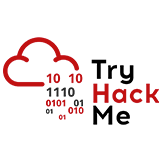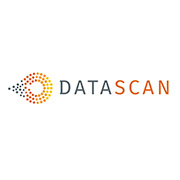Sorry! Registrations for this project has now closed.
But don’t worry, similar projects are coming soon, so leave your email address to be the first to know.
- Project starts30 August 2024
- PrerequisitesIT & Networking Fundamentals
- Project Duration6 weeks
- Course Price This project is part of the Career Launcher Cyber Security Course
The Project
Wilderland’s is a project initiated by Cassinia Environmental, an Australian leader in Landscape restoration, regenerative agriculture and biodiversity protection. Wilderlands contributes to the global environmental community’s mission to protect 30% of nature by 2030 through its platform that enables organisations and individuals to actively support the protection of Australian biodiversity.
The objective of this project is to conduct an external, unauthenticated cybersecurity vulnerability assessment of Wilderlands Infrastructure. Key aspects of this project include:
- Assessing Wilderlands existing security measures from an external perspective, assessing how well the infrastructure resists potential cyber attacks.
- Identifying potential cyber threats and vulnerabilities that could be exploited by external threats, with an assessment of risk levels associated with these vulnerabilities.
- Propose recommendations for mitigation of identified vulnerabilities.

Meet Your Mentor
Meet Your Mentor
Austin Phillips is a comprehensive security practitioner with experience building and managing multiple teams across the information security industry. He has a proven expertise in security engineering, incident response, risk & vulnerability management, and security architecture. He is passionate about helping companies understand and resolve risks across on-prem and cloud
Austin Phillips is a comprehensive security practitioner with experience building and managing multiple teams across the information security industry. He has a proven expertise in security engineering, incident response, risk & vulnerability management, and security architecture. He is passionate about helping companies understand and resolve risks across on-prem and cloud environments. From leading SOC teams, to building threat intelligence programs, Austin is a leader with experience across multiple aspects of the industry. In his free time, he enjoys golf, fishing, and spending time with his family.
Where I’ve worked
- Manager of Security Engineering @ Datascan
- Sr. Technology Engineer @ Signature Consultants
- Threat Analyst manager @ Conquest Cyber
Firewalls
Firewalls are security systems that monitor and control incoming and outgoing network traffic based on predetermined security rules, acting as a barrier between a trusted network and an untrusted network.
How it will be practiced and demonstrated
This knowledge area is a pre-requisite for our Cyber Security course. Your knowledge of Firewalls will support the project work you complete throughout the course.
Access Control
Access control in cybersecurity refers to the process of granting or denying specific requests to obtain and use information and related information processing services, ensuring that only authorized users have access to resources in a network or system.
How it will be practiced and demonstrated
This knowledge area is a pre-requisite for our Cyber Security course. Your knowledge of Access Controls will support the project work you complete throughout the course.
VPN
A VPN (Virtual Private Network) in cybersecurity is a service that creates a secure, encrypted connection over a less secure network, such as the internet, to provide privacy and anonymity for data communication.
How it will be practiced and demonstrated
This knowledge area is a pre-requisite for our Cyber Security course. Your knowledge of VPN will support the project work you complete throughout the course.
Data Protection
Data protection in cybersecurity involves implementing measures and protocols to safeguard sensitive information from unauthorized access, corruption, or theft throughout its lifecycle.
How it will be practiced and demonstrated
Students will demonstrate an understanding of foundational concepts of data protection, including data confidentiality, integrity, and availability. Mastering this skill area includes optimizing data protection strategies to address specific organisational needs and emerging threats.
Hardware Security
Hardware security in cybersecurity refers to the protection of physical devices from threats like tampering, theft, or damage, ensuring the integrity and functionality of the hardware components.
How it will be practiced and demonstrated
Students will demonstrate an understanding of the importance of securing hardware components and devices. Mastering this skill area includes guiding organizations to enhance their hardware security posture against evolving threats.
Vulnerability Identification
Vulnerability identification in cybersecurity is the process of discovering, categorizing, and assessing weaknesses in systems or software that could be exploited by cyber threats.
How it will be practiced and demonstrated
Students will demonstrate an understanding of what vulnerabilities are and why identifying them is essential. Mastering this skill area includes an ability to optimise the vulnerability identification process to ensure comprehensive coverage and accuracy.
Vulnerability Risk Assessment
Vulnerability risk assessment in cybersecurity involves evaluating identified vulnerabilities to determine their potential impact and the risk they pose to the organization's assets and operations.
How it will be practiced and demonstrated
Students will demonstrate an understanding of the basic concepts of vulnerability risk assessment and its importance in determining the potential impact of vulnerabilities.. Mastering this skill area includes an ability to proficiently communicate accurate risk assessment results to different stakeholders.
Vulnerability Reporting
Vulnerability reporting in cybersecurity is the process of documenting and communicating identified vulnerabilities and their potential impacts to relevant stakeholders for informed decision-making and remediation.
How it will be practiced and demonstrated
Students will demonstrate an understanding of the importance of reporting vulnerabilities and can create simple reports. Mastering this skill area includes an ability to guide organizations in developing and optimising their vulnerability reporting processes.
Vulnerability Mitigation
Vulnerability mitigation in cybersecurity refers to the implementation of measures and strategies to reduce the impact or likelihood of exploited vulnerabilities in systems or software.
How it will be practiced and demonstrated
Students will demonstrate an understanding of the basic concepts of vulnerability mitigation. Mastering this skill area includes an ability to communicate the importance and benefits of effective vulnerability mitigation to different stakeholders.
Kali Linux
Kali Linux in cybersecurity is a specialized Linux distribution designed for penetration testing and security auditing, equipped with a variety of tools for assessing and ensuring the security of systems.
How it will be practiced and demonstrated
Students will demonstrate an understanding of the basic concepts of Kali Linux and its use in cybersecurity. Mastering this skill area includes an ability expertly in leverage Kali Linux for complex security challenges, contributing to tool development and optimization.
OpenVAS
OpenVAS in cybersecurity is an open-source framework consisting of services and tools for vulnerability scanning and vulnerability management.
How it will be practiced and demonstrated
Students will demonstrate an understanding of the basic concepts of vulnerability scanning, beginning to use OpenVAS for simple scans. Mastering this skill includes providing insights for scan optimization and contributing to security strategy development.
Nessus
Nessus in cybersecurity is a widely used vulnerability scanner tool that identifies vulnerabilities, misconfigurations, and potential risks in networks to enhance their security posture.
How it will be practiced and demonstrated
Students will demonstrate an understanding of the basic concepts of vulnerability scanning with Nessus. Mastering this skill includes using Nessus to assist in shaping vulnerability management strategies and mentoring others in advanced techniques.
Nmap
Nmap in cybersecurity is a powerful network scanning tool used for network discovery and security auditing, capable of identifying hosts and services on a computer network.
How it will be practiced and demonstrated
Students will demonstrate an understanding of the basic concepts Nmap. Mastering this skill includes demonstrating expert network discovery and analysis with Nmap and a capacity to lead complex network security projects.
During your projects, you will have a chance to practice and demonstrate competency in communication by successfully transmitting your ideas, thinking processes and solutions in a way that is easily understood by others.
Your mentor will observe and assess your competency across a number of communication related skills including;
Listening
Listening is the ability to accurately receive and interpret messages in the communication process. Listening is key to all effective communication and is not a passive process. In fact, the listener can, and should, be at least as engaged in the process as the speaker. The phrase ‘active listening’ is used to describe this process of being fully involved.
Presence
Your presence signals your capacity to stand out and make an impact on those around you. As you move into senior roles, this attribute becomes particularly important, however it is also an attribute that can support your ability to make a positive impression on hiring managers during a job interview process.
Articulation
An ability to express yourself in a coherent form helps to ensure people will understand your value. Great articulators are able to clearly communicate complex scenarios to their audience to ensure they are understood. This can go a long way to supporting your interview process and building confidence in those you are communicating with.
Inclusivity
In a modern work environment you are required to work with individuals from a variety of backgrounds, cultures and social positions. The most highly effective teams are those that are able to adapt and learn to work with a range of people and personalities.
A tried and true skill for any professional is the ability to present their ideas to an audience and effectively transmit the intended message. You will have the opportunity to strengthen your presentation skills in front of a live company stakeholder at the conclusion of your project(s).
Your mentor will observe and assess your competency across a number of presenting related skills including;
Introductions
Your presentations should take your audience on an engaging journey. How you start a presentation is critical to capturing your audience’s attention and establishing the premise and flow of the story line.
Presentation Structure
The structure of your presentations will determine whether your audience comes away with new insights and understanding or if they dis-engage from your message. Take the time to consider the structure of your ideas, the order they follow and how they how to support the audience on their journey to your conclusion.
Conclusions
Bring home your presentations with a conclusion that links back to your main points and introduction. The goal of a good conclusion to a presentation is leaving your audience with a tangible take-away that adds value to them. Knowing your audience and what is important to them is a key starting point to forming a strong conclusion.
Audience Feedback
At times you will be required to field questions and be ready to move off-script to maintain the value exchange between yourself and the audience. Great presenters encourage audience interaction and curate this dynamic to emphasise key points in the presentation without letting it derail their core message.
Presence
Your audience will feel as comfortable as you are. Therefore it is important to ensure you are as comfortable as possible with the material you are presenting and strive to maintain confidence in your own abilities to deliver the presentation. Practice makes perfect here so don’t get disheartened if it takes some time before you’re completely at ease delivering your message in a presentation format.
The best solutions are most often formed through the input of multiple people. In modern work environments, small team collaboration is an increasingly sought after skill by employers, as agile ways of working are adopted that bring together multiple disciplines around a unified challenge.
Your mentor will observe and assess your competency across a number of collaboration related skills including;
Interaction
Effective collaboration with others is one of the primary skills hiring managers look for in new talent, particularly for digital roles where you are required to work closely with individuals from all different departments and skill sets. Collaboration is the make up of all your interactions with your teammates and stakeholders.
Teamwork & Leadership
There will be times during your Harness Projects where you will need to work as a team to synthesise research or support each other with feedback and advice. You may be called on to lead as the group recognises a specific skill set in you in relation to a task at hand. Your communication skills will be your foundation for success here, so take the opportunity to step into leadership roles and inspire confidence in yourself and others.
Conflict Resolution
Conflict, arguments and change are a natural part of our lives and often helps us learn more about differing beliefs, cultures and backgrounds. How we respond to these moments goes a long way to determining how quickly a group, organisation or culture can find a foundation of harmony to continue working / relating effectively, to the task at hand.
Initiative & Contribution
Showing initiative is doing things without being told; finding out what you need to know, continuing when things get tough, and spotting and taking advantage of the opportunities that others pass by. You act, instead of reacting, at work. Initiative has become increasingly important in today’s workplace. Organizations want employees who can think on their feet and take action without waiting for someone to tell them what to do. After all, this type of flexibility and courage is what pushes teams and organizations to innovate and to overcome competition.
You will demonstrate empathy by listening to your end-users and stakeholders and appropriately translating their needs, motivations and pain points into your final recommendation solution. A number of important factors contribute your over empathy as a working professional. This includes compassion for your colleagues and customers, an openness to alternative ideas and ways of working, a curiosity to understand others on a deeper level and the social awareness to foresee the impacts of the work you contribute.
Your mentor will observe and assess your competency across a number of empathy related skills including;
Compassion
When you sit in a room with your colleagues or your clients do you ever look for where there’s a pain in the room? And if you do notice, do you feel content enough to do something about it? Studies are finding these simple acts found in compassionate workplaces are helping to produce more productive, efficient and happier employees in organizations. Differing slightly from empathy which allows us to mirror someone else’s feelings, or altruism which is an action that benefits someone else, compassion is an
emotional response when perceiving suffering and involves an authentic desire to help. At Harness Projects, we strive to build a team culture of compassion. We’re all on this learning journey together and the more we can demonstrate moments of compassion for one another and all of our unique experiences during the project the stronger the bond we will form and the better the outcomes will be for everyone involved.
Openness
Openness is one of the big 5 personality traits. People who demonstrate high levels of openness tend to be linked to high levels of creative thinking, curiosity and flexibility. Openness includes a receptivity to new ideas as well as an attention to the inner feelings of others. These are traits that will support you well in the problem solving work you do.
Curiosity
Curiosity is a quality related to inquisitive thinking such as exploration, investigation, and learning. Curiosity as a behavior and emotion is considered the driving force behind not only human development, but developments in science, language, and industry. Every problem you encounter will ask for a level of curiosity from you. The more you can surrender to that curiosity and reserve assumptions or early judgement, the more space you will have to seek out novel and effective solutions to the design challenge at hand. Not only that, but a curiosity in how you develop during this learning program is a self-awareness trait that hiring managers will value highly.
Social Awareness
Having an awareness of the impact of your work is critically important to how you can contribute to the world we want to live in. You are in an extremely fortunate position to be part of an education program along with learning a skill that can help shape the experiences of millions of less fortunate people. The projects we curate at Harness Projects are all about applying all of your efforts to meaningful causes. It hopefully shows us what is possible and demonstrate that all of our efforts when combined contribute to the type of world we want to live in.
Resourcefulness is characterized by resilience, a growth mindset, self-reflection, and curiosity, which, when combined, define an individual capable of overcoming obstacles with creativity, continuously learning and adapting, introspectively assessing situations, and exploring innovative solutions.
Your mentor will observe and assess your competency across a number of resourcefulness skills including;
Resilience
Resilience is the ability to cope with unexpected changes and challenges in your work and life. It’s not always possible to prevent stressful or adverse situations, but you can strengthen your capacity to deal with these challenges. You can start to build resilience by asking yourself; What can I do to get back on track? I can’t control everything, so what is in my control? Can I change something I’m doing to make things better? What can I learn from this? There are no guarantees that real world projects will be smooth sailing. You may need to nd inner courage and resilience to get through challenging moments in your project experience. This is a sandbox for your growth but remember to reach out for support when you need it.
Growth Mindset
A growth mindset describes the underlying belief people have about learning and intelligence. When students believe they can get smarter, they understand that effort makes them stronger. Therefore they put in extra time and effort, and that leads to higher achievement. This is because they worry less about looking smart and they put more energy into learning. We all have triggers that bring us back to a fixed mindset. It may be when we face challenges or criticism. To remain in the ‘growth’ zone, we must identify and work with these triggers. Once we can identify the triggers, we can learn to talk back to it, persuading it to collaborate with us in pursuing our goals.
Self-Reflection
Self reflection is like looking into a mirror and describing what you see. It is a way of assessing yourself, your ways of working and how you learn. To put it simply ‘reflection’ means to think about something. Reflecting helps you to develop your skills and review their effectiveness, rather than just carry on doing things as you have always done them. It is about questioning, in a positive way, what you do and why you do it and then deciding whether there is a better, or more efficient, way of doing it in the future.
Curiosity
Curiosity embodies the innate drive to explore, question, and understand the world around us. When individuals are curious, they are more inclined to delve deeper into subjects, seeking to uncover new information and insights. This relentless pursuit of knowledge fuels continuous learning and discovery. Curiosity propels people to venture beyond their comfort zones, embracing the unknown with enthusiasm rather than fear. It's this very trait that leads to innovative thinking and creative solutions, as curious minds are never satisfied with surface-level answers. However, every person has moments when their curiosity might wane, often stifled by fear of the unknown or complacency. To nurture and sustain curiosity, it's crucial to recognize and challenge these moments, transforming them into opportunities for growth and exploration. By doing so, individuals can harness curiosity as a powerful ally in their quest for lifelong learning and personal development.
Stress Management
Stress management is the art of navigating the complexities of stress with strategies and techniques that enhance well-being and personal effectiveness. It encompasses recognizing the sources of stress, understanding its impact on our physical and mental health, and adopting practical methods to mitigate its effects. Effective stress management enables individuals to maintain balance and composure, even in the face of life's inevitable pressures and challenges. It involves a proactive approach to setting boundaries, prioritizing tasks, and finding time for relaxation and rejuvenation. Mastery of stress management not only improves resilience and emotional stability but also promotes a more focused and productive mindset. It's essential to acknowledge that stress is a natural part of life; the key lies in developing a toolkit of coping mechanisms that allow for a healthy processing of stressors. By doing so, individuals can transform potentially overwhelming situations into opportunities for personal growth and enhanced performance.


We’ve partnered with Cyber Security industry leaders to ensure you receive the best quality learning content and tools to apply your Cyber skills.



